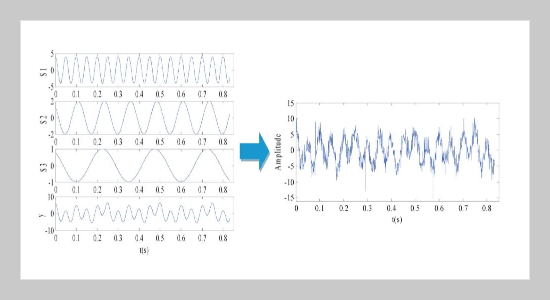Jingzong Yang This email address is being protected from spambots. You need JavaScript enabled to view it.1, Xiaodong Wang2,3, Jiande Wu2,3 and Zao Feng2,3
1School of Information, Baoshan University, Baoshan, Yunnan 678000, P.R. China
2Faculty of Information Engineering and Automation, Kunming University of Science and Technology, Kunming 650500, P.R. China
3Engineering Research Center for Mineral Pipeline Transportation of Yunnan Province, Kunming 650500, P.R. China
REFERENCES
- [1] Sinha, S. L., S. K. Dewangan, and A. Sharma (2015) A review on particulate slurry erosive wear of industrial materials: in context with pipeline transportation of mineralâslurry, ParticulateScience&Technology 35(1), 103�118. doi: 10.1080/02726351.2015.1131792
- [2] Jiang, S. C., B. R. Cheng, and C. L. Wen (2011) The application prospect of pipeline transportation in metallurgicalmine,Conservation &Utilizationof Mineral Resources (5), 114�117. doi: 10.13779/j.cnki.issn 1001-0076.2011.z1.026
- [3] Datta, S., and S. Sarkar (2016) A review on different pipeline fault detection methods, Journal of Loss Prevention in the Process Industries 41(2016), 97�106. doi: 10.1016/j.jlp.2016.03.010
- [4] Liu, S. H., and Y. Zhang (2015) Signal denoising methods based on wavelet analysis, Mechanical Engineering & Automation (1), 84�88. (In Chinese)
- [5] Coifman, R. R. (1992) Wavelet analysis and signal processing, Acta Petrologica Et Mineralogica 9(3), 765�780.
- [6] Yeh, J. R., J. S. Shieh, and N. E. Huang (2010) Complementary ensemble empirical mode decomposition: a novel noise enhanced data analysis method, Advances in Adaptive Data Analysis 2(2), 135�156. doi: 10.1142/S1793536910000422
- [7] Torres, M. E., M. A. Colominas, G. Schlotthauer, et al. (2011) A complete ensemble empirical mode decomposition with adaptive noise, IEEE International Conference on Acoustics, Speech and Signal Processing. IEEE, 4144�4147.
- [8] Jiao, W., Z. Li, D. Wang, et al. (2014) A method for wavelet threshold denoising of seismic data based on CEEMD, Geophysical Prospecting for Petroleum 53(2), 164�172.
- [9] Zhou, T. T., X. M. Zhu, W. C. Peng, et al. (2015) A waveletthreshold denoising method for faultdatabased on CEEMD and permutation entropy, Journal of Vibration & Shock 34(23), 207�211. doi: 10.13465/j. cnki.jvs.2015.23.036
- [10] Li, J., C. Liu, Z. Zeng, et al. (2015) GPR signal denoising and target extraction with the CEEMD method, IEEE Geoscience & Remote Sensing Letters 12(8), 1615�1619. doi: 10.1117/12.2050432
- [11] Huang, N. E., Z. Shen, S. R. Long, et al. (1998) The empirical mode decomposition and the Hilbert spectrum for nonlinear and non-stationary time series analysis, Proceedings Mathematical Physical &Engineering Sciences 454(1971), 903�995. doi: 10.1098/rspa. 1998.0193
- [12] Zarzoso, V., and P. Comon (2010) Robust independent component analysis by iterative maximization of the kurtosis contrast with algebraic optimal step size. IEEE Transactions on Neural Networks 21(2), 248�261. doi: 10.1109/TNN.2009.2035920
- [13] Blanco-Velasco,M.,B.Weng, and K. E.Barner (2008) ECG signal denoising and baseline wander correction based on the empirical mode decomposition, Computers in Biology &Medicine 38(1), 1�13. doi: 10.1016/j. compbiomed.2007.06.003
- [14] Wu, Z.H., and Norden E.Huang (2005) Ensembleempirical mode decomposition: a noise-assisted data analysis method, Advances in Adaptive Data Analysis 1(1), 1�41. doi: 10.1142/S1793536909000047
- [15] Hyvärinen, A., J. Hurri, and P. O. Hoyer (2009) Independent Component Analysis, Natural Image Statistics, Springer London, 529�529.
- [16] Sun, Y., and S. Su (2015) Research on noise reduction of internet of things based on power line using independent component analysis, Journal of Xian University of Posts & Telecommunications 2(6), 23�27. doi: 0.13682/j.issn.2095-6533.2015.06.006 (In Chinese)
- [17] Boudraa, A. O., and J. C. Cexus (2007) EMD-based signalfiltering,IEEE Transactions on Instrumentation & Measurement56(6), 2196�2202. doi: 10.1109/TIM. 2007.907967
- [18] Wei, X., R. Lin, S. Liu, et al. (2016) Improved EEMD denoising method based on singular value decomposition for the chaotic signal, Shock and Vibration 2016(12), 1�14. doi: 10.1155/2016/7641027
- [19] Cheng, W. D., and D. Z. Zhao (2016) EMD soft-thresholding denoising algorithm for rolling element bearing rotational frequency estimation, Journal of Zhejiang University (Engineering Science) 50(3), 428�435. doi: 10.3785/j.issn.1008-973X.2016.03.005 (In Chinese)
- [20] Jiang, S. F., Z. G. Chen, Q. H. Shen, et al. (2016) Damage detection and locating based on EEMD-Fast ICA, Journal of Vibration & Shock 35(1), 203�209. doi: 10. 13465/j.cnki.jvs.2016.01.032 (In Chinese).
- [21] Bi, F., L. Li, J. Zhang, et al. (2015) Source identification of gasoline engine noise based on continuous wavelet transform and EEMD–RobustICA, Applied Acoustics 100, 34�42. doi: org/10.1016/j.apacoust. 2015.07.007
















